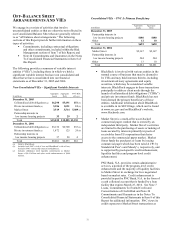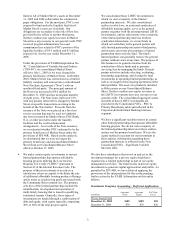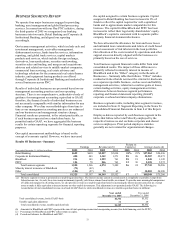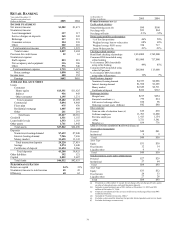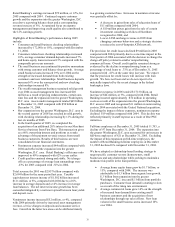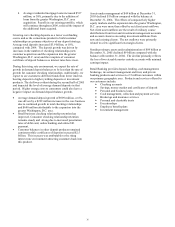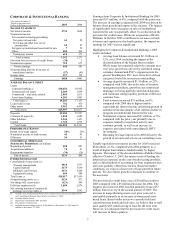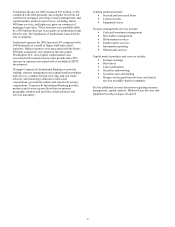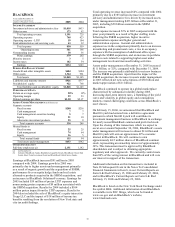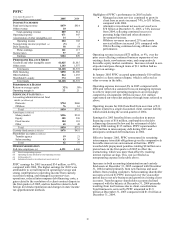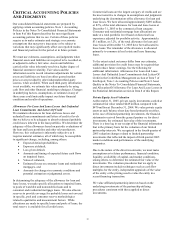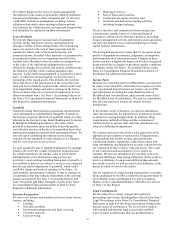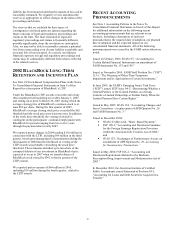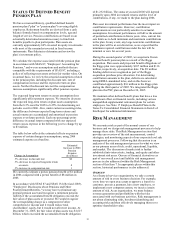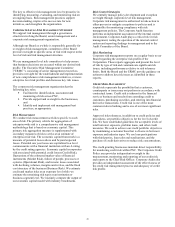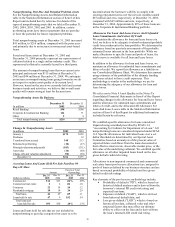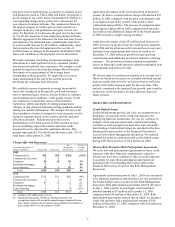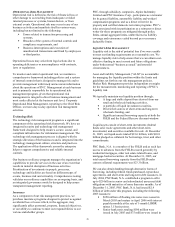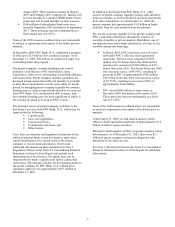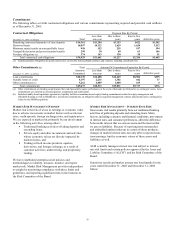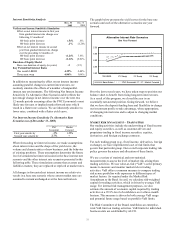PNC Bank 2005 Annual Report Download - page 41
Download and view the complete annual report
Please find page 41 of the 2005 PNC Bank annual report below. You can navigate through the pages in the report by either clicking on the pages listed below, or by using the keyword search tool below to find specific information within the annual report. 41
CRITICAL ACCOUNTING POLICIES
AND JUDGMENTS
Our consolidated financial statements are prepared by
applying certain accounting policies. Note 1 Accounting
Policies in the Notes To Consolidated Financial Statements
in Item 8 of this Report describes the most significant
accounting policies that we use. Certain of these policies
require us to make estimates and strategic or economic
assumptions that may prove inaccurate or be subject to
variations that may significantly affect our reported results
and financial position for the period or in future periods.
We must use estimates, assumptions, and judgments when
financial assets and liabilities are required to be recorded at,
or adjusted to reflect, fair value. Assets and liabilities
carried at fair value inherently result in a higher degree of
financial statement volatility. Fair values and the
information used to record valuation adjustments for certain
assets and liabilities are based on either quoted market
prices or are provided by other independent third-party
sources, when available. When such third-party information
is not available, we estimate fair value primarily by using
cash flow and other financial modeling techniques. Changes
in underlying factors, assumptions, or estimates in any of
these areas could materially impact our future financial
condition and results of operations.
Allowances For Loan And Lease Losses And Unfunded
Loan Commitments And Letters Of Credit
We maintain allowances for loan and lease losses and
unfunded loan commitments and letters of credit at levels
that we believe to be adequate to absorb estimated probable
credit losses inherent in the loan portfolio. We determine the
adequacy of the allowances based on periodic evaluations of
the loan and lease portfolios and other relevant factors.
However, this evaluation is inherently subjective as it
requires material estimates, all of which may be susceptible
to significant change, including, among others:
• Expected default probabilities,
• Exposure at default,
• Loss given default,
• Amounts and timing of expected future cash flows
on impaired loans,
• Value of collateral,
• Estimated losses on consumer loans and residential
mortgages, and
• Amounts for changes in economic conditions and
potential estimation or judgmental errors.
In determining the adequacy of the allowance for loan and
lease losses, we make specific allocations to impaired loans,
to pools of watchlist and nonwatchlist loans and to
consumer and residential mortgage loans. We also allocate
reserves to provide coverage for probable losses not covered
in specific, pool and consumer reserve methodologies
related to qualitative and measurement factors. While
allocations are made to specific loans and pools of loans, the
total reserve is available for all credit losses.
Commercial loans are the largest category of credits and are
the most sensitive to changes in assumptions and judgments
underlying the determination of the allowance for loan and
lease losses. We have allocated approximately $489 million,
or 82%, of the total allowance for loan and lease losses at
December 31, 2005 to the commercial loan category.
Consumer and residential mortgage loan allocations are
made at a total portfolio level based on historical loss
experience adjusted for portfolio activity. Approximately
$31 million, or 5.2%, of the total allowance for loan and
lease losses at December 31, 2005 have been allocated to
these loans. The remainder of the allowance is allocated
primarily to commercial real estate and lease financing
loans.
To the extent actual outcomes differ from our estimates,
additional provision for credit losses may be required that
would reduce future earnings. See the following for
additional information: Allowances For Loan And Lease
Losses And Unfunded Loan Commitments And Letters Of
Credit in the Credit Risk Management section of Item 7 of
this Report, Note 1 Accounting Policies and Note 8 Asset
Quality in the Notes To Consolidated Financial Statements,
and Allocation Of Allowance For Loan And Lease Losses in
the Statistical Information section in Item 8 of this Report.
Private Equity Asset Valuation
At December 31, 2005, private equity investments carried at
estimated fair value totaled $449 million compared with
$470 million at December 31, 2004. We value private equity
assets at each balance sheet date based primarily on either,
in the case of limited partnership investments, the financial
statements received from the general partner or, for direct
investments, the estimated fair value of the investments.
There is a time lag in our receipt of the financial information
that is the primary basis for the valuation of our limited
partnership interests. We recognized in the fourth quarter of
2005 valuation changes related to limited partnership
investments that reflected the impact of third quarter 2005
market conditions and performance of the underlying
companies.
Due to the nature of the direct investments, we must make
assumptions as to future performance, financial condition,
liquidity, availability of capital, and market conditions,
among others, to determine the estimated fair value of the
investments. The valuation procedures that we apply to
direct investments include techniques such as cash flow
multiples for the entity, independent appraisals of the value
of the entity or the pricing used to value the entity in a
recent financing transaction.
We value affiliated partnership interests based on the
underlying investments of the partnership utilizing
procedures consistent with those applied to direct
investments.


